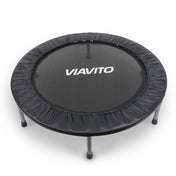Barbells are a staple in strength training, offering versatility for building muscle, increasing endurance, and enhancing overall fitness. Whether you're a beginner looking to start weightlifting or an experienced lifter aiming to upgrade your equipment, choosing the right barbell is essential. This guide will walk you through the key factors to consider before making your purchase, including types, materials, weight capacity, and grip options.
Why Choose a Barbell for Your Workouts?
Barbells are an essential tool for strength training, providing benefits such as:
-
Progressive Overload – Allows for gradual increases in weight, key for strength and muscle growth.
-
Full-Body Training – Supports compound movements like squats, deadlifts, and bench presses.
-
Versatility – Suitable for powerlifting, Olympic lifting, bodybuilding, and general fitness.
-
Scalability – Works for beginners and advanced lifters alike.
Key Considerations When Buying a Barbell
1. Types of Barbells
Different barbells serve different training goals. The main types include:
-
Standard Barbells (1-inch diameter) – Great for beginners, home gyms, and general strength training.
-
Olympic Barbells (2-inch diameter) – Used for Olympic weightlifting and heavy lifting, built to handle higher weight loads.
-
Powerlifting Barbells – Designed for squats, deadlifts, and bench presses with minimal flex.
-
EZ Curl Bars – Have a curved shape to reduce wrist strain during bicep and tricep exercises.
-
Trap/Hex Bars – Ideal for deadlifts and shrugs, offering a neutral grip for reduced lower back strain.
2. Barbell Length & Weight Capacity
-
Standard bars are usually 5ft-6ft, ideal for lighter lifting and small spaces.
-
Olympic bars range from 7ft and are designed for heavy lifts.
-
Weight capacity varies by type, with standard bars handling around 100-150kg, while Olympic and power bars can support 300kg+.
3. Barbell Knurling & Grip
-
Knurling provides grip texture to prevent slipping.
-
Powerlifting bars have deeper knurling for a firmer hold, while Olympic bars have moderate knurling for high-rep training.
-
Knurl marks help with consistent hand placement for balance and form.
4. Barbell Whip & Rotation
-
Barbell whip refers to how much the bar flexes during lifts. Olympic bars have more whip, while powerlifting bars are stiffer.
-
Bushings vs. Bearings:
-
Bushings (Powerlifting) – Less rotation, better for heavy lifts.
-
Bearings (Olympic Lifting) – Smoother spin for explosive movements.
Choosing the Right Barbell for Your Training
Best for Beginners
-
Standard or Olympic barbell (depending on weight progression goals).
-
5ft-6ft bar with moderate knurling for comfortable grip.
Best for Powerlifting
-
Power bar with aggressive knurling and minimal whip.
-
High weight capacity (300kg+).
Best for Olympic Lifting
-
Olympic barbell with needle bearings for smooth spin.
-
Moderate knurling with flexible whip for dynamic lifts.
Best for Home Gyms
-
Compact barbell (5ft-6ft) for space efficiency.
-
Consider an EZ curl bar for arm-focused workouts.
Frequently Asked Questions
H3: how much does a barbell weigh
A standard barbell weighs between 10kg and 20kg
What weight should I start with?
Beginners should start with an empty barbell (10kg-20kg) and progressively add weight as strength improves.
How do I maintain my barbell?
Clean regularly with a dry cloth, store in a dry place, and occasionally brush the knurling to remove chalk and sweat buildup.
Do I need an Olympic barbell for home workouts?
Not necessarily. A standard barbell is fine for general strength training, while an Olympic barbell is better for heavy lifting and long-term progress.
Find the Perfect Barbell at Sweatband
Whether you're a beginner or an experienced lifter, Sweatband has a wide range of barbells suited for every fitness level. Browse our collection today and start building your strength with the right equipment.

